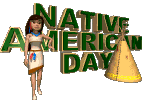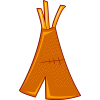Be
forewarned - genealogy research is addictive.
The yellow field and red
symbol colors are the colors of Spain. First brought to New
Mexico by Spanish explorers in 1540. On New Mexico's flag we
see a red sun with rays stretching out from it. There are
four groups of rays with four rays in each group. This is an
ancient sun symbol of a Native American people called the
Zia, who believed that the giver of all good gave them gifts
in groups of four:
-The four directions - north, east, south and west.
-The four seasons - spring, summer, fall and winter.
-The day - sunrise, noon, evening and night.
-Life itself - childhood, youth, middle years and old age.
All of these are bound by a circle of life and love, without
a beginning or end
.
Border States:
Other areas you can
check out.
Arizona Colorado Oklahoma
Texas Utah
Area:
121593 sq. mi, 5th
Land 121359 sq. mi., Water 234 sq. mi.
Area Code:
505
Economy: Look for oral interviews, notations on census,
old phone books, shipping records. estate and probate
records for mention or disposition of agricultural and
industrial products.
Agriculture: Cattle, dairy products, hay, nursery stock,
chilies.
Industry:
Electric equipment, petroleum and
coal products, food processing, printing and publishing,
stone, glass, and clay products, tourism.
State Songs: New Mexico has two
state songs, "O, Fair New Mexico" and "Asi es Nuevo Mejico
 State Flower: Yucca flower
Yucca glauca
State Flower: Yucca flower
Yucca glauca
New Mexico’s state flower is sometimes called “Spanish
bayonet” for its long sharp, leaves. Another nickname is
“beargrass.” Native Americans used yucca roots for making
soap and hair tonic. (That’s why it’s sometimes called
“soapweed.”) They also ate the central spikes, flowers, and
seed pods. A spiny leaf tip, with fibers attached, could be
used as needle and thread! Members of the agave family, to
which yuccas belong, have a wide variety of uses. Some
companies sell products made from yuccas, claiming they have
medicinal value.
 If your research takes you to one of the "Five Civilized Tribes"
(Cherokee, Chickasaw, Choctaw, Creek, and Seminole), you'll
appreciate the availability of records such as the Dawes Rolls
-- a listing of more than 100,000 tribal members. However,
researching the smaller, less-documented tribes could take you
to the National Archives, Tribal Offices, Historical Societies
or even Ancient Burial Grounds. Your research skills will be
challenged and you will hit dead ends--but the rewards of
finding your connection to this continent's first people, the
Native Americans, will make it worth the effort.
If your research takes you to one of the "Five Civilized Tribes"
(Cherokee, Chickasaw, Choctaw, Creek, and Seminole), you'll
appreciate the availability of records such as the Dawes Rolls
-- a listing of more than 100,000 tribal members. However,
researching the smaller, less-documented tribes could take you
to the National Archives, Tribal Offices, Historical Societies
or even Ancient Burial Grounds. Your research skills will be
challenged and you will hit dead ends--but the rewards of
finding your connection to this continent's first people, the
Native Americans, will make it worth the effort.
 When: 4th Friday in September
When: 4th Friday in September
This day is set aside to honor and celebrate Native Americans,
the first Americans to live in the U.S. Still commonly referred
to as American Indians, the term "Native Americans" has been
used in recent years as a sign of respect and recognition that
they were indeed the first people to populate our wonderful
nation. By the time the first explorers and settlers arrived
from Europe, Native Americans had populated the entire North
American Continent, from the Atlantic to the Pacific, and from
the Gulf of Mexico all the way to the northern reaches of
Canada.
 Here are five steps to help you get started.
Here are five steps to help you get started.
 1.
Begin with your own family.
1.
Begin with your own family.
It's important to talk with your family as
much as possible. Obtain as much information regarding your
ancestors as you can; handed- down stories and all; they could
contain clues for your research which you can attempt to
document. Locate any old photos in possession of family members
and have them identify the person or persons, the location, and
the time frame if possible.
 2. Find the Tribal Location.
2. Find the Tribal Location.
If your family hails from present-day New Mexico, you can
probably narrow your first search down to Southwest tribes such
as the Navajo or Apache.
Take a look at area maps and try to locate the tribal area.
Maps contain many of the tribes, their locations and
tribal links. Follow the links. If the tribe was in New Mexico,
be sure to check the bordering states: Arizona
Colorado Oklahoma Texas Utah
Look for that information buried and forgotten
in family bible, records, vital statistics, letters or diaries.
If you don't find it there, you'll need to expand your research
into tribal histories and migration patterns. (see Online
Resources below)
 3. Learn tribal culture and history.
3. Learn tribal culture and history.
Searching for Native American roots means sharpening your
skills as a historian. Without the basic understanding of tribal
history and historical context within the larger perspective of
American expansion, it will be far more difficult for you to dig
out your roots. In some cases, you'll need to know the migration
patterns of a particular tribe or the sometimes many areas in
which it was resettled. Our ancestors did not stay in one place
forever.
 4. Know what records are available.
4. Know what records are available.
If you are currently a member of a tribe, you will may contact
your tribal enrollment office for a copy of your pedigree and
your local Bureau of Indian Affairs (BIA) office for copies of
probates and allotment records (for tribes west of the
Mississippi). But, if neither you nor any of your kin are
enrolled, your search will be more difficult. Most of the
time, you will need to use regular genealogical records with
emphasis on Indian tribes pertinent to your individual families.
Don't jump ahead and begin researching with
the early records; instead find your ancestors on the 1930
census or other documents and work backwards; documenting where
they lived, when they lived there and who their neighbors were.
Many times families moved and relocated together, and some
intermarried, sometimes into different tribes. If they disappear
around 1900-1910 then look to the Indian "rolls".
Tribal Indians were not counted in early
federal censuses. Census records from 1790 to 1850 included only
Indians living in settled areas who were taxed and didn't claim
a tribal affiliation. Indians on the reservations or those who
lived a nomadic existence were not taxed, and therefore not
counted. Some Indians "passed as white" and are not identified
as Indians.
The 1860 federal census added a category
called "Indian (taxed)." From 1870 to 1910, the census had an
"Indian" category, but it didn't include reservation
Indians until 1890. Most of that census was lost to fire,
though, so 1900 is the first available census that lists most
Native Americans.
 5. Use Online Resources.
5. Use Online Resources.
Mailing lists-Genealogy
mailing lists are a quick and easy way for researchers to
network with one another. Once you've located your tribe, join
in discussions at some of the nearly 60 mailing lists dedicated
to Native American research at
Rootsweb Native American and
Rootsweb Ethnic-Native
Publications-Many
tribes, historical societies and individuals publish journals or
newsletters about a specific tribe or about American Indian
research in general. Look for online newsletters. Read books.
How Many Ancestors Do You
Have?
1)................1 YOU
2).................2 parents
3)............4 grandparents
4)...........8 great grandparents
5)...........16 gg grandparents
6)...........32 ggg grandparents
7)...........64 gggg grandparents
8)..........128 ggggg grandparents
9)..........256 gggggg grandparents
10..........512 ggggggg grandparents
11).......1,024 gggggggg grandparents
12).......2,048 ggggggggg grandparents
13).......4,096 gggggggggg grandparents
14).......8,192 ggggggggggg grandparents
15)......16,184 gggggggggggg grandparents
16)......32,768 ggggggggggggg grandparents
17)......65,536 gggggggggggggg grandparents
18).....131,072 ggggggggggggggg grandparents
19).....262,144 gggggggggggggggg grandparents
20).....524,288 ggggggggggggggggg grandparents
21)...1,048,576 gggggggggggggggggg grandparents
22)...2,097,152 ggggggggggggggggggg grandparents